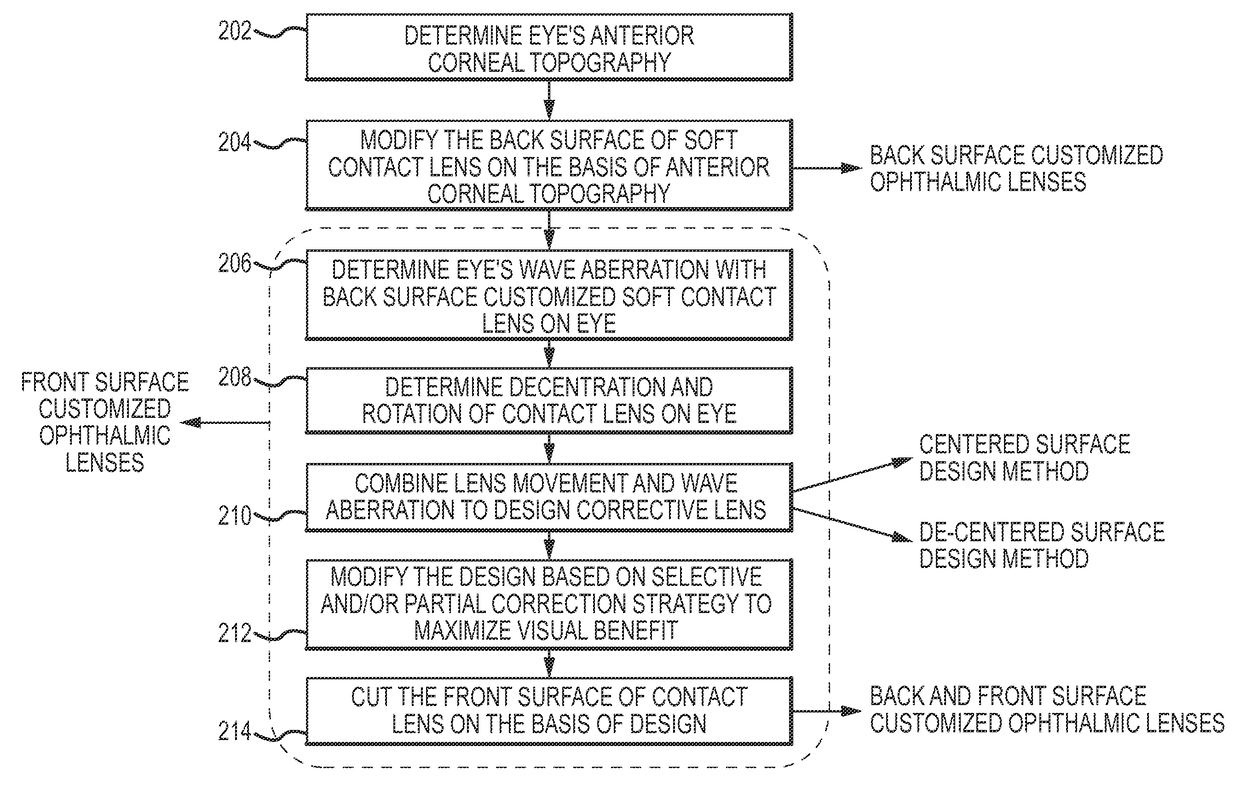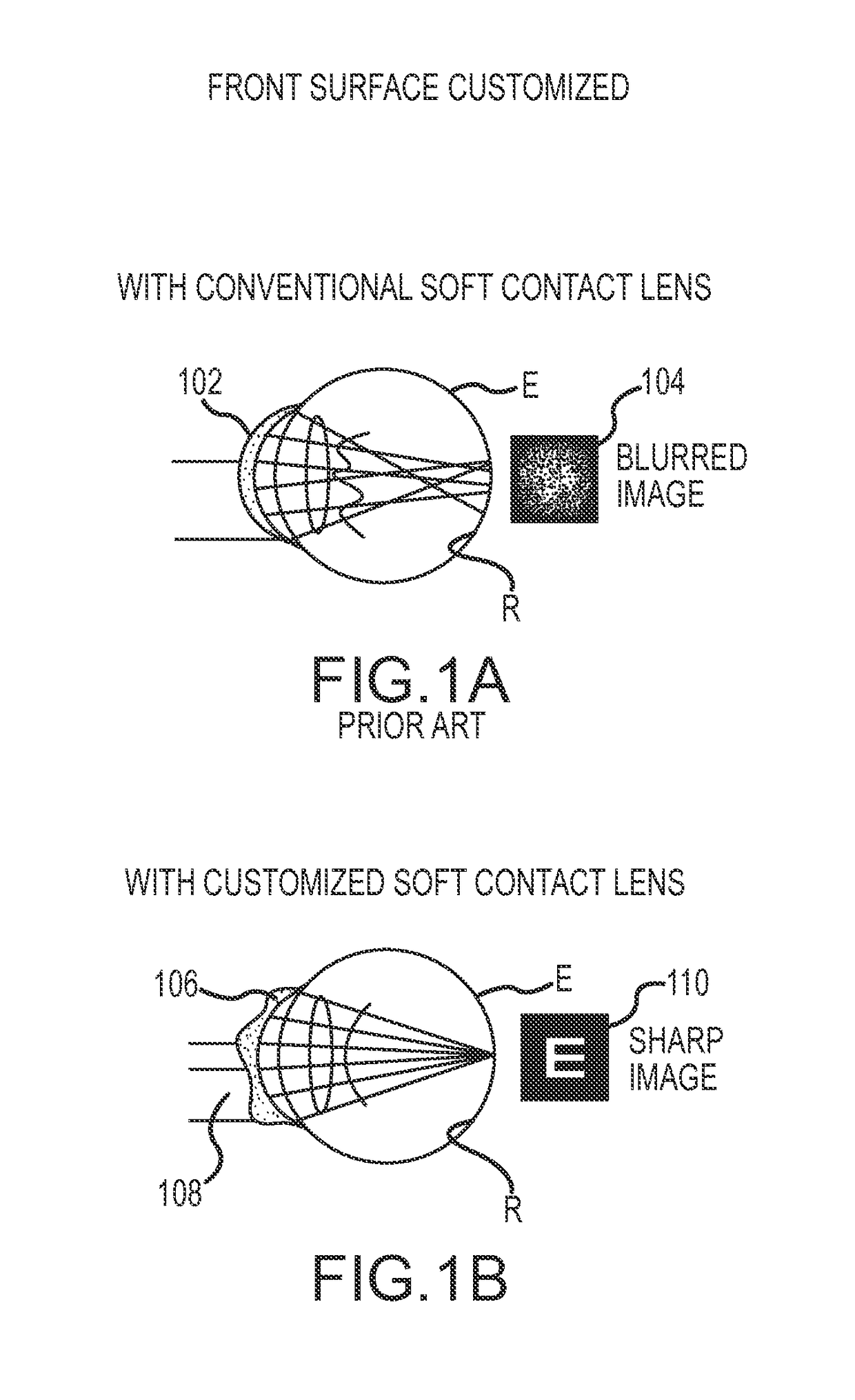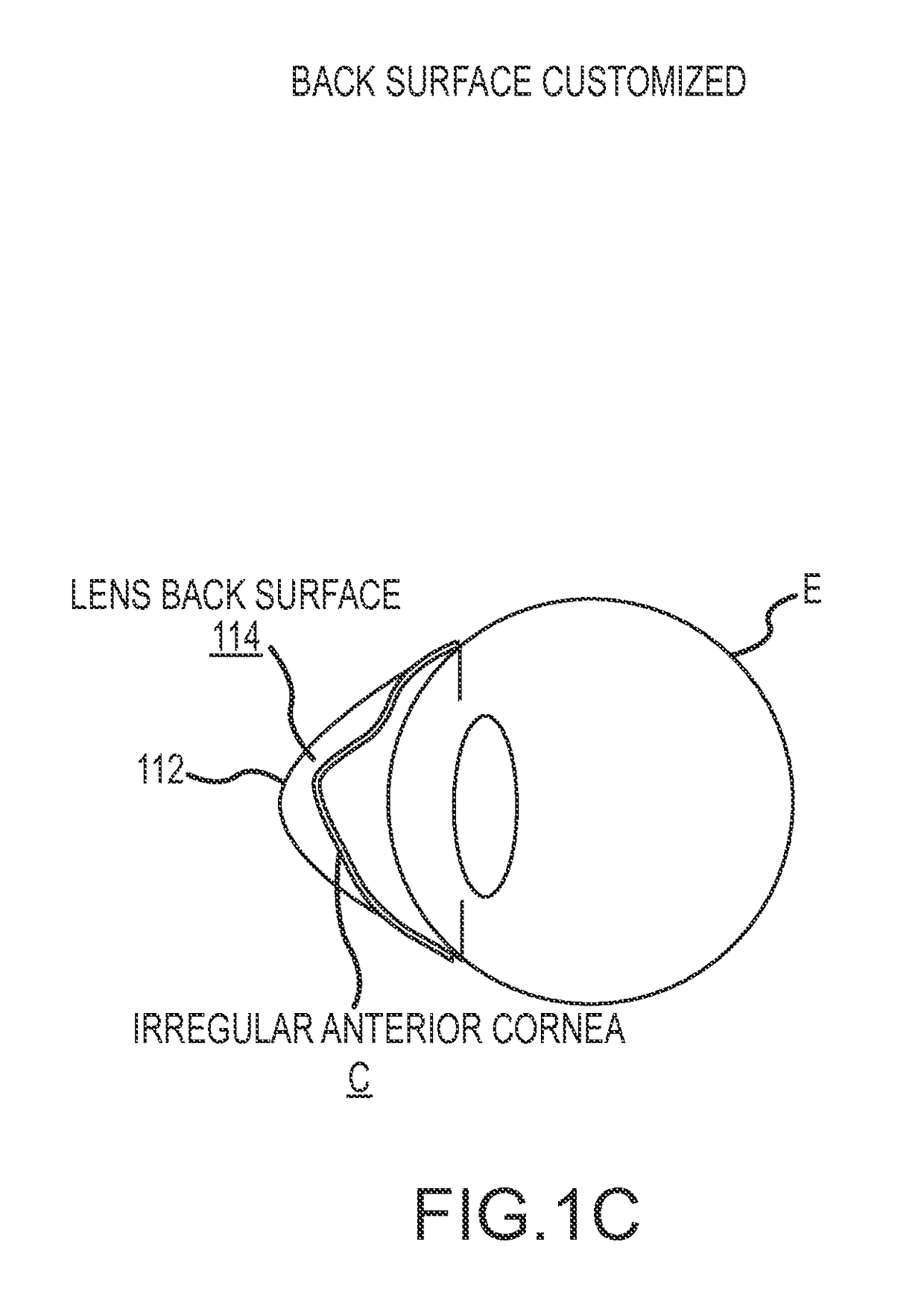System and method for designing wavefront-guided ophthalmic lenses
a wavefront-guided, ophthalmic lens technology, applied in the field of vision care, can solve the problems of non-reversible surgical methods, limited availability, and inapplicable methods, and achieve the effect of accurate measurement of ocular aberration and reliably achieving vision correction
- Summary
- Abstract
- Description
- Claims
- Application Information
AI Technical Summary
Benefits of technology
Problems solved by technology
Method used
Image
Examples
Embodiment Construction
[0013]A preferred embodiment of the present invention will be set forth in detail with reference to the drawings, in which like reference numerals refer to like elements or steps throughout.
[0014]FIGS. 1A-1C illustrate the concept of customized ophthalmic lenses. As shown in FIG. 1A, a conventional lens 102 applied to the patient's eye E provides only a spectacle prescription, leaving the irregular higher-order aberrations uncorrected. That leads to a blurred image 104 on the retina R, especially for larger pupils and eyes with corneal abnormalities such as keratoconus and corneal transplants. As shown in FIG. IB, a front-surface-customized ophthalmic lens 106 with an asymmetric surface profile 108 on the front side of the lens 106 corrects those higher-order aberrations to provide a sharp image 110.
[0015]In eyes with abnormal corneas, lens movements impair the correction performance, since the optical axis of the corrective lens is not aligned with the eye's optical axis. In order ...
PUM
 Login to View More
Login to View More Abstract
Description
Claims
Application Information
 Login to View More
Login to View More - R&D
- Intellectual Property
- Life Sciences
- Materials
- Tech Scout
- Unparalleled Data Quality
- Higher Quality Content
- 60% Fewer Hallucinations
Browse by: Latest US Patents, China's latest patents, Technical Efficacy Thesaurus, Application Domain, Technology Topic, Popular Technical Reports.
© 2025 PatSnap. All rights reserved.Legal|Privacy policy|Modern Slavery Act Transparency Statement|Sitemap|About US| Contact US: help@patsnap.com



